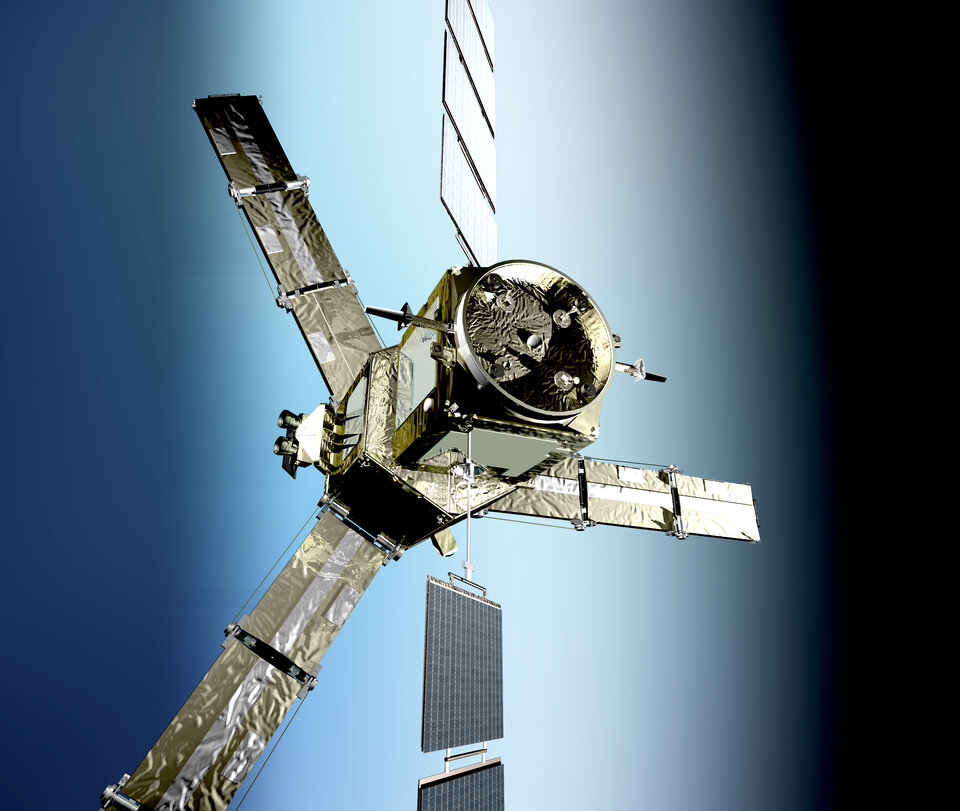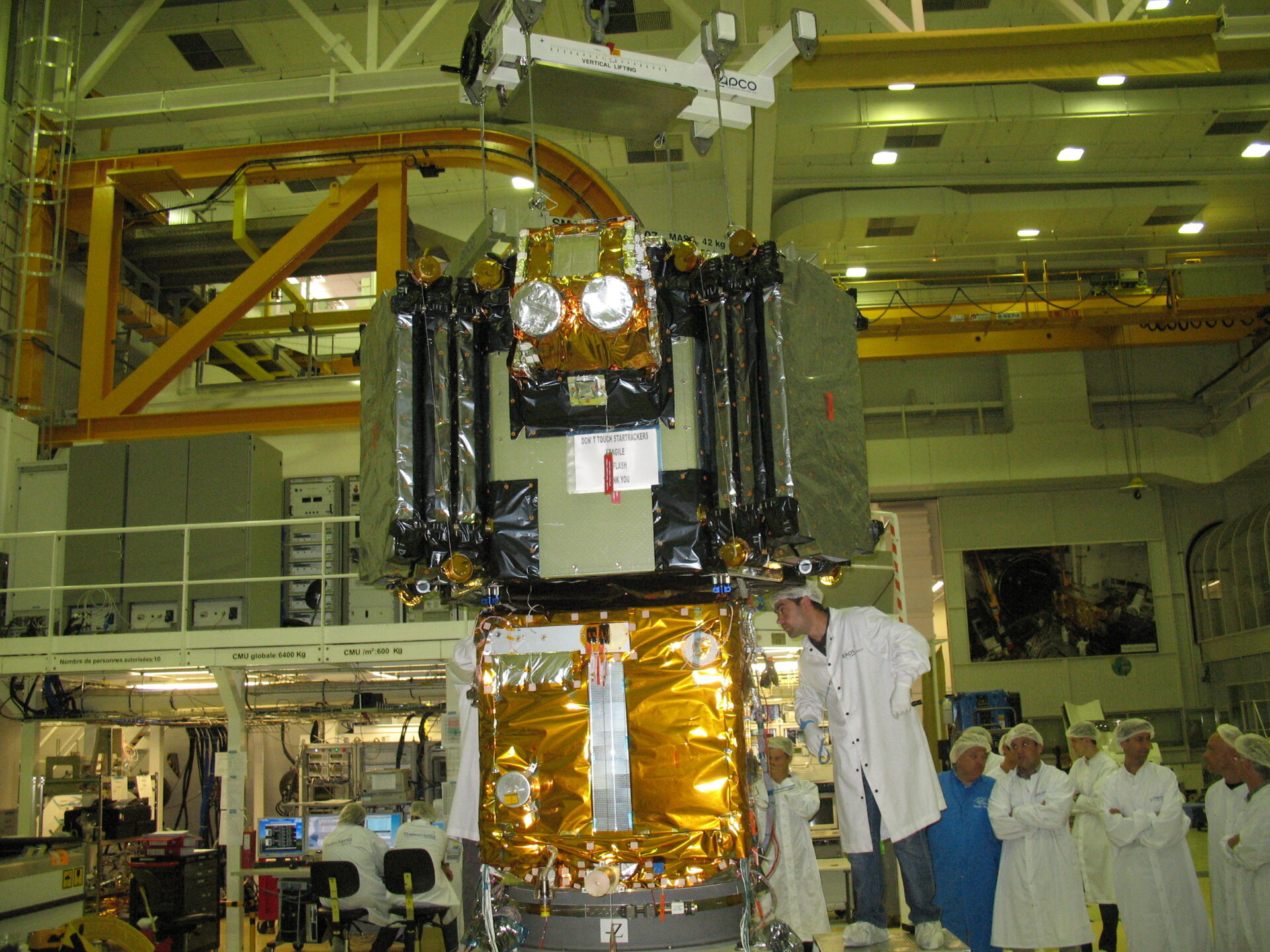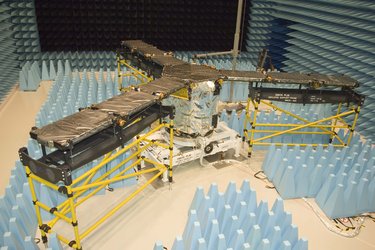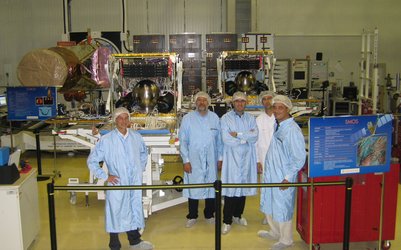SMOS instrument and platform unite
Following the successful three-month testing period at ESA-ESTEC, the payload for ESA's Soil Moisture and Ocean Salinity mission was formally handed over this week to Thales Alenia Space in Cannes (France), for integration with the satellite platform.
The Soil Moisture and Ocean Salinity (SMOS) payload module, developed under an ESA contract by EADS-CASA in Madrid (Spain), carries the innovative Microwave Imaging Radiometer using Aperture Synthesis (MIRAS) as its only instrument. Over the past months, the instrument has been assembled, tested and is now fully qualified for flight.
In parallel, the French Space Agency CNES – cooperating with ESA for the SMOS mission – has procured a Proteus platform within the framework of its 'Five Platform Procurement' contract with Thales Alenia Space. This is a generic platform and provides the services to the payload that are necessary to operate the satellite, such as orbit and attitude control, power and communication with the ground. The platform has been ready for some time waiting for the payload module to arrive.

The payload and platform will now be merged to form the full SMOS satellite at Thales Alenia Space's facilities in Cannes. Having performed similar exercises for the Jason, Calypso and Corot missions, all of which use Proteus-based platforms, Thales Alenia Space has extensive experience in these kinds of activities. The task of integration will be performed under CNES contract, with CNES and ESA sharing the cost equally for this part of the programme.
In order to start this next phase efficiently, ESA, Thales Alenia Space and CNES have been working together to review the documentation, test results and planning. Now with everything in order, the next step is to mate the two modules. This will be followed by another set of environmental tests. The interfaces with the launcher adaptor will also be checked and in final series of tests the actual ground segment will be used to command the satellite and analyse the data.
SMOS is due for launch in 2008 and once in orbit will observe soil moisture over the Earth's landmasses and salinity over the oceans. Soil moisture data are urgently required for hydrological studies and data on ocean salinity are vital for improving our understanding of ocean circulation patterns.









